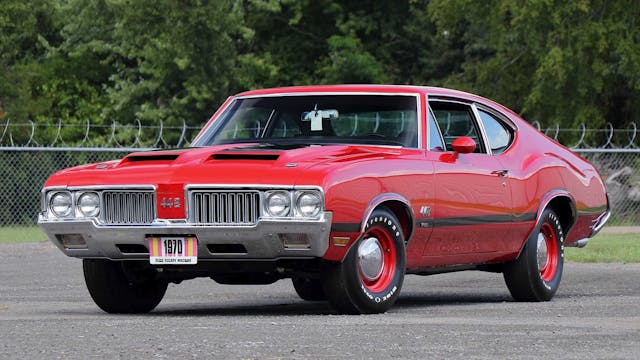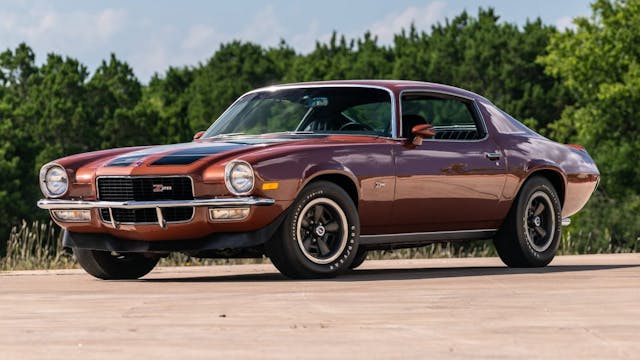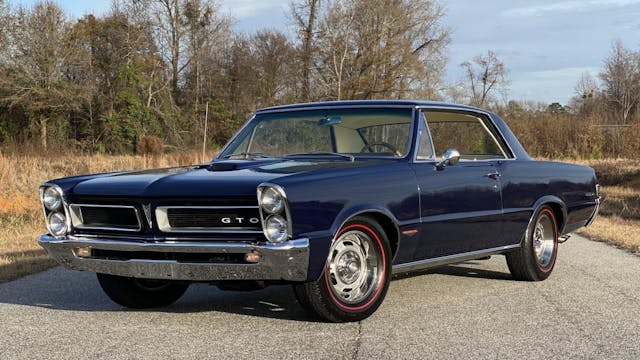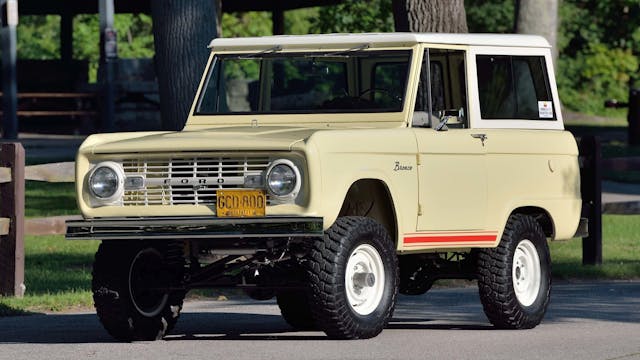Are these 5 familiar classics finally cooling off?
We have all been wondering how long the collector car market’s historic hot streak can carry on, and what the inevitable fall-off might look like. Well, the latest Hagerty Price Guide—updated each quarter—is giving us some clues. Although there were still some surprising gains, we are starting to see decreases, as well.
The cooling off is the muscle car market, which reached all-time highs this year. Now, several of these 1960s and ’70s classics have posted declines.
Some of the reasons for this have to do with supply—we’ve seen lower-quality examples hit the market in recent months. Yet there’s no doubt the broader economy is having an impact. Inflation is hitting us all in the wallet while uncertainty in the stock market is hitting us all in the 401(k). Although classic cars, like many tangible assets, can be a hedge against such bad news, they are also, like other discretionary purchases, subject to pressures on consumers. That’s particularly true for relatively attainable vehicles like muscle cars, which by and large are bought and sold by people of ordinary means.
Note that the drops in the latest guide haven’t erased the gains from the last couple of years. Also, remember that a correction is inevitable and, to a certain extent, healthy, as it indicates the market is being driven by rational buyers and sellers, as opposed to speculators. There’s no doubt, though, that this is a change from the rapid appreciation we’ve all become accustomed to in recent years.
1968-1972 Oldsmobile 4-4-2 W-30 -12%

This generation 4-4-2 is without a doubt peak Oldsmobile muscle. While Oldsmobile’s more visually-reserved approach may not have sold as many cars in an exuberant era of colors named “Plum Crazy” or wild Judge decal packages, the 4-4-2 was no slouch. Looking past the deluxe interior and comparatively staid styling, the W-30 code packed a punch. Peaking with a 455-cubic-inch engine that debuted in 1970 with a respectable 370-horsepower and torque in the 500 lb-ft range, these cars were not to be trifled with.
Over the course of 2021 and the first quarter of 2022, the 4-4-2 experienced increases with the rest of the muscle car market. After spring, it started to lose value while most other top-tier muscle cars held their own. The fact that they have dropped in value two quarters in a row needs to be taken seriously. The net increase over the past 12-months now only stands at a few percent. It is important to keep in mind that we are in a typical lull for this segment, as big players in the muscle car market save their best cars for the upcoming January auctions in Scottsdale and Kissimmee. Nonetheless, the 4-4-2 could very well be a glimpse into the future for the broader muscle segment.
1970-1973 Chevrolet Camaro Z/28 -9%

Late second-generation GM F-bodies have long been a talking point this year, with Bandit-era Trans Ams and Z/28 Camaros being big movers publication over publication. The early-second generation has so far been pulling up the rear, appreciating just behind its younger siblings. To the uninitiated, it might seem odd that these cars would be so widely segmented. The reality is that despite sharing the same generation, they are very different cars. The early Z/28 remained incredibly capable, using the high-compression Corvette-based LT1 350 and hewing closer to Trans Am series roots. The later cars followed the Mustache Muscle theme in that their performance didn’t really live up to their more flashy aesthetic.
Later Z/28s have held fast to their gains over the year, but 1970-73 model years experienced a downturn. This doesn’t negate earlier gains, but it may be a warning sign of things to come for their more popular siblings from the late 70s, and may even have implications for second generation Trans Ams, which usually hold a similar market trajectory.
1964-1967 Chevrolet Chevelle SS -9%

Chevrolet’s Chevelle experienced one of the more interesting transformations over the course of the Muscle Car era. With the hottest version sporting a 327 in 1964 and through much of 1965, it seemed meek compared to the GTO’s 389 and other early entrants into the segment. That changed in late 1965 with the introduction of the 396 big block to the Chevelle’s engine bay. Actual promotion of the more potent plant wouldn’t happen until 1966, but this set the stage for the fire-breathing Super Sport Chevelles that would roll out through the early ’70s.
While the ’68–72 Chevelles held on to their gains much better, ’64–67 Super Sport models experienced a broad softening. Some of the difference could be related to the popularity of the later models, and we are monitoring those cars for signs of a turning tide. As with the other models on this list, these losses don’t negate gains from earlier this year, but it does shine a light on where things could be headed.
1964-1967 Pontiac GTO -7%

Pontiac GTO reigns among Muscle Car royalty as the genesis of the performance segment. Huge interest in the model as well as its historical significance even landed it on our 2022 Bull Market list. It was a heck of a pick as well: the GTO exploded in value, gaining an average of 32 percent in the first portion of the year.
Once late summer arrived, however, prices began to flatten and dip slightly. The seven percent reduction in GTO values is likely attributed to the declining quality of examples hitting the market as well as satisfaction of market demand. As mentioned earlier, due to the sales cycle for these cars, we may not have a real sense of where things are headed until the auctions in January.
1966-1977 Ford Bronco -8%

It’s not a Muscle Car, but we’ve discussed the first generation Ford Bronco for a very long time. Never, though, in terms of softening values. In fact, the first-gen Bronco has been one of the hottest collector vehicles to emerge over the past few years. Values of exceptional, stock examples have regularly tipped the scales at the six-figure mark in 2022.
Broncos have now gotten to a point where the average collector is priced out of the market, and $100,000+ starts to look like a lot of money for a utilitarian vehicle with few amenities. But let’s be honest here, we don’t buy classic trucks for the amenities. In the grand scheme, an 8-percent loss on early Broncos isn’t that much. However, zoom out to the rest of the model series and take note: later generations also experienced declines, with some models even seeing value losses in consecutive quarters. While it takes more than one publication to make a trend, it certainly looks like we could finally be at the end of the first-gen Bronco’s unprecedented hot streak.
Check out the Hagerty Media homepage so you don’t miss a single story, or better yet, bookmark it.



“Best” in what way? The build quality of Plymouth/Dodge muscle cars was inferior to GM. Performance was comparable to other makes. It was a corporate decision by Plymouth/Dodge to devote more budget dollars to advertising and less on manufacturing. It was a genius marketing decision resulting in the selling of thousands more units. But again, build quality was sacrificed.